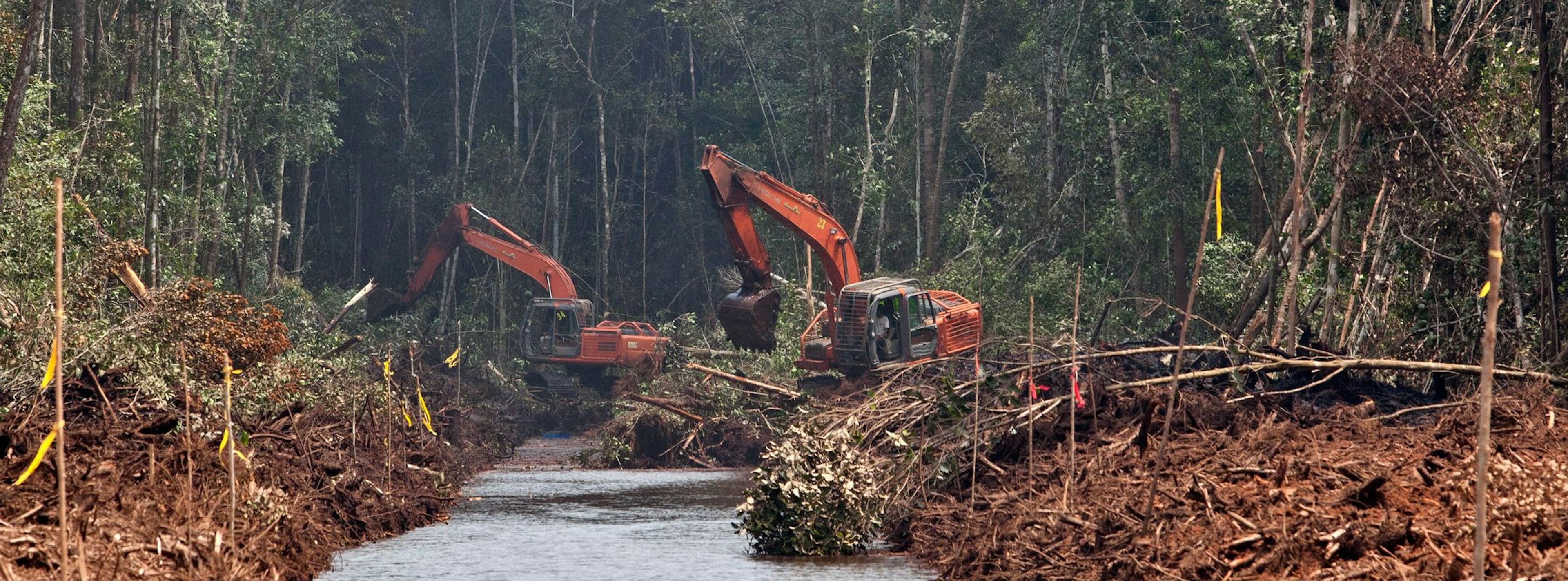Indonesia's pulp exports linked to widespread fires on peatlands
23 Feb 2021
4 min read
Over 40% of Indonesia’s pulpwood is grown on drained peatlands, causing significant carbon emissions and health risks from catastrophic fires.

Peatland forest clearance in Kalimantan // Ulet Ifansasti, Greenpeace